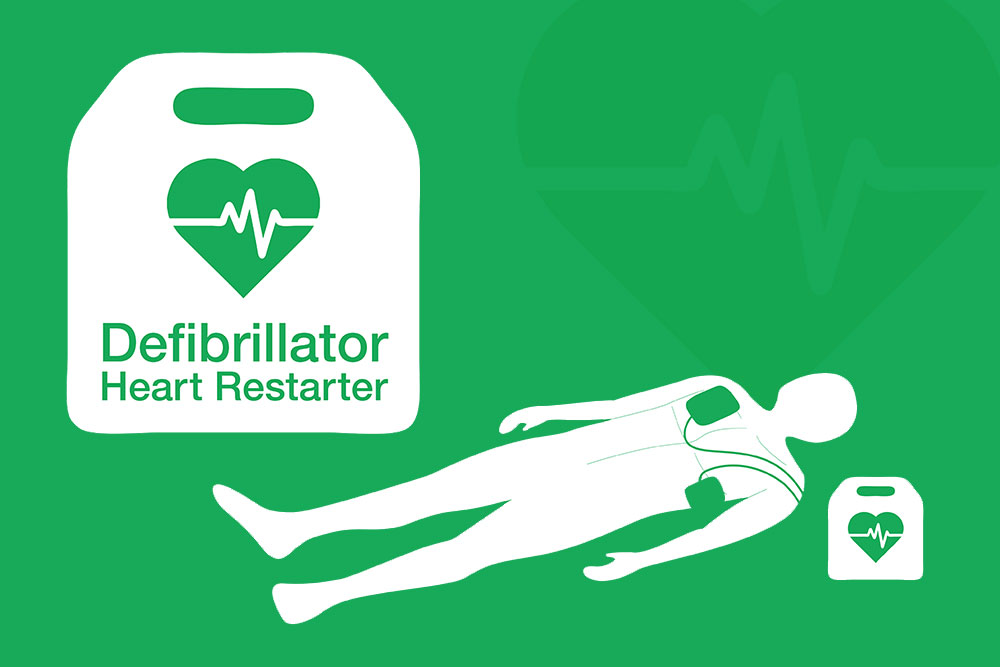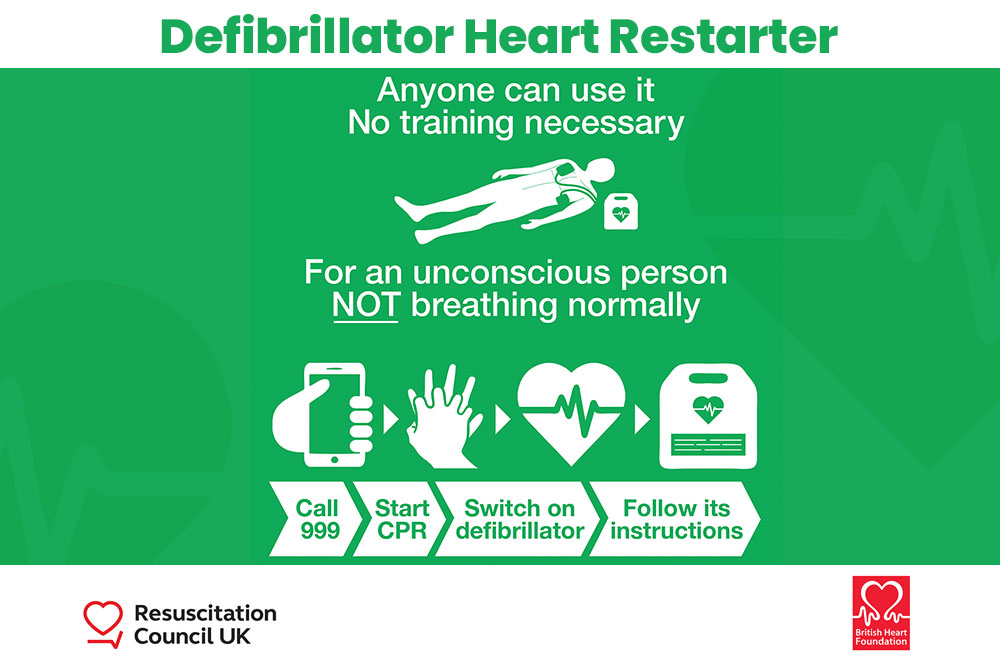
A cardiac arrest can happen to anyone at any time. It doesn’t matter how old you are or how fit you are. If someone is having a cardiac arrest, fast action with an automated external defibrillator (AED) could save their life.
Defibrillators, in fact, save thousands of lives yearly, so it’s no wonder that over 100,000 are installed all over the UK. But would you know where to find an AED in an emergency situation?
In most cases, defibrillator signs show where to locate an AED in a public setting. But do you know what this signage looks like? Are there different types of AED signs?
Keep reading to learn how to recognise the most up-to-date defibrillator sign. You never know when this knowledge could help save someone’s life.
What is an Automated External Defibrillator (AED)?
When a person has a cardiac arrest, their heart is beating in an abnormal rhythm (arrhythmia), making it impossible for the heart to pump blood properly. Cardiac arrest is caused by malfunctions in the heart’s electrical system. An AED can help stop the condition and save a person’s life.
The act of using electricity to stop arrhythmia is known as defibrillation. An AED is a portable computerised defibrillator. It looks like a small box with two paddles attached to it. When a person is having a cardiac arrest, a bystander can use the defibrillator to deliver a small electric shock to their chest. This shock restores the heart to its normal rhythm.
Over 7.6 million people in the UK suffer from heart and circulatory diseases, according to the British Heart Foundation. And this figure is rising. A staggering 84,000 patients were hospitalised due to heart attacks between 2021 and 2022, and that’s just in England alone. So, there’s a chance that you might witness someone having a cardiac arrest the next time you’re out and about.
Why AED Signs are important
Unfortunately, recent figures show that AEDs were used in just ten per cent of out-of-hospital cardiac arrests in the UK in 2022. Despite the effectiveness of these devices, the low rate of defibrillator use has been put down to a fear of using the machine, lack of bystanders, or simply not being able to find a defibrillator when it’s most needed.
Yet, over 50,000 marked and mapped public AEDs are installed throughout the UK, almost double that if you count unregistered AEDs. If someone needs one, there’s a good chance that an AED is nearby.
When a person uses an AED to assist when someone is having a cardiac arrest, it’s known as Public Access Defibrillation (PAD).
Every single second matters in an emergency. Recognising what a defibrillator sign looks like can make the difference between life and death.
What Are the Different Types of AED Signs?
You may have missed the fuss, but there’s been a lot of debate around defibrillator signs during the last decade. In 2006, a Resuscitation Council UK BLS/AED subcommittee produced a standardised defibrillator sign. This sign met the European Union’s colour, shape, and content requirements. It was approved by the Health and Safety Executive (HSE). All told, most people were happy with the new defibrillator sign.
In 2008, the International Liaison Committee on Resuscitation (ILCOR) announced that it had approved another universal AED sign. This updated version was similar but not exactly like the UK’s version.
While this change didn’t cause widespread chaos and panic, it was more than a little confusing. And even a moment’s confusion can be fatal when someone’s life is on the line.
So, in 2014, various health and safety bodies decided it was time to standardise defibrillator signs. It was hoped that standardising the defibrillator sign would make it easier to locate AEDs and encourage more people to use them in an emergency.
A 2015 survey of 1,895 adults showed that fewer than half the respondents could recognise and understand the 2006 defibrillator sign. Another survey was conducted and based on the feedback from the public, a final AED location sign was designed.
The Updated AED Location Sign
The updated version of the AED location sign included the following changes:
- The lightning bolt icon was changed to a stylised ECG heart trace
- The description was changed to “Defibrillator – Heart Restarter”
- The image of a person lying on their back with the defibrillator pads placed on them was added
The AED sign is green with white writing and graphics.

In some cases, it may be accompanied by an infographic poster that states:
- Anyone can use an AED – no training is needed
- An AED is to be used on an unconscious person who isn’t breathing normally
- Basic instructions on the use of an AED

What Are the Legal Requirements for AED Signs?
There are no legal obligations for a business to install an AED. However, employers must provide adequate facilities and first aid equipment for employees and the public if needed, as per the Health and Safety (First-Aid) Regulations 1981. An AED doesn’t cost much money and can be a lifesaver, so installing one in your workplace is worth the minimal investment of time and money.
If you do, you should ensure your AED is marked with the correct, updated version of the AED location sign. Adding the info poster or an infographic showing how to use an AED is also recommended. AED signage should be near the machine and visible to anyone nearby.
As for the laws around the sign itself, AED signs must comply with the Health and Safety (Safety Signs and Signals) Regulations 1996 and the British Standard BS 5499-10:2014. The new AED location sign conforms to all the legal requirements.
Defibrillators save thousands of lives yearly, so it’s no wonder that over 100,000 are installed all over the UK.
Learn How to Use an AED
Cardiac arrest can happen to anyone, even if you’re in great shape. Consider the following example: an engineer from Cambridgeshire was jogging with his running club when he suffered a cardiac arrest. Luckily, his running mates could perform CPR and access a defibrillator from a nearby recreation centre. Their quick thinking and access to an AED saved the engineer’s life. As it turned out, the cardiac arrest was caused by an inherited heart condition. The man recovered from his ordeal and even completed the Cambridge half marathon.
Knowing how to use an AED really can make a difference between life and death. It’s an essential piece of health and safety knowledge.
Take our AED Defibrillator Training course and equip yourself with the necessary skills to save someone’s life.


















































































































































































































































































































































































































































































































































































































































































































































